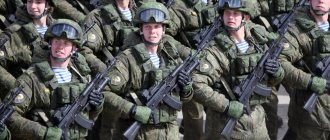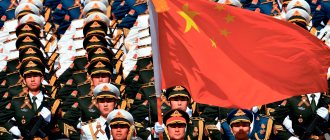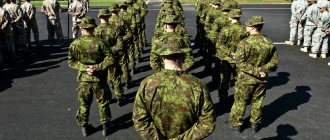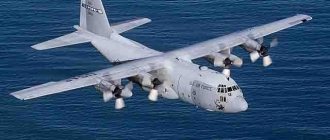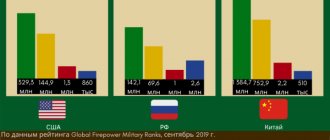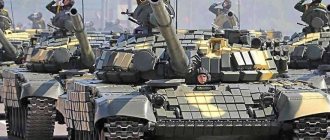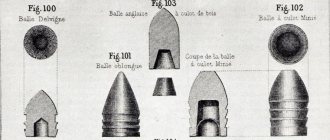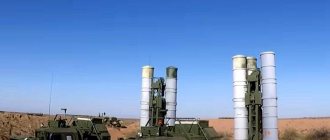| The key tasks of the Turkish Armed Forces are to protect the country from external threats and realize national interests in the region. |
The state and key directions of building the Turkish armed forces at the present stage are determined by the complexity of the military-political situation in the Middle East and the presence of serious challenges and security threats to the state. These include, in particular: the large-scale civil war in Syria; the possibility of creating a Kurdish state in Northern Iraq and Syria; terrorist activities of the Kurdistan Workers' Party; the unresolved Cyprus problem and disputes with Greece over control of the islands in the Aegean Sea.
In the current situation, the republic is implementing a complex of military-industrial programs and measures for the construction and development of the armed forces, aimed at neutralizing threats to external security to the state.
The main provisions of the regulatory framework for the construction and use of the Turkish Armed Forces are set out in the constitution of the state, adopted in 1982, as amended in 2013, as well as in the National Security Concept, which came into force in March 2006. They define the key tasks of the Armed Forces: protecting the country from external threats and realizing national interests in the region.
Based on this, a Long-term development plan for the Turkish Armed Forces for the period until 2016 has been developed and is being implemented, specifying their construction programs. The document is aimed at improving the national military-industrial complex so that it is able to compete with global exporters of military products, increasing the operational and combat capabilities of the armed forces, as well as the level of technical compatibility of the national armed forces with the NATO Allied Forces.
The Turkish military-industrial complex is being improved through the implementation of programs to create new types of weapons and military equipment, as well as to modernize the equipment in service. The main ways to increase the combat capabilities of armed forces formations at present are to equip troops with new weapons and their modernization, change the organizational structure of units and increase their mobility.
According to preliminary estimates, about $60 billion will be required to carry out these activities. Until 2022, up to $10 billion is expected to be spent on improving the Turkish Armed Forces. The main work is planned to be carried out at the enterprises of the country's military-industrial complex. Sources of financing are the military budget, national and international funds, as well as funds received from citizens in the form of compensation for exemption from military service.
The expenditure side of the budget for 2013 amounted to 24.64 billion dollars. Appropriations allocated to security ministries and departments are distributed as follows: Ministry of National Defense (MHO) - $11.3 billion; Ministry of Internal Affairs - 1.6 billion; Main Security Directorate - 8.2 billion; command of the gendarmerie troops - 3.3 billion; Coast Guard Command (CG) - $240 million. The share of funds allocated by MHO in relation to the total expenditure amount of the state budget bill for 2013 was 10.9%, which is 0.2% lower compared to 2012 - 11.1%
STRUCTURE AND SIZE OF THE TURKISH ARMED FORCES
The Turkish armed forces include ground forces, air force and navy. In wartime, in accordance with the constitution of the country, it is envisaged to include units and subunits of the gendarmerie troops into the ground forces (in peacetime, subordinate to the Minister of Internal Affairs), and in the Navy - units of the command of the Defense and Defense Forces.
According to Western military experts, at the beginning of 2013, the total number of armed forces personnel in peacetime reached about 480 thousand people (ground forces - 370 thousand, air force - 60 thousand and navy - 50 thousand), and gendarmerie troops - 150 thousand .
According to the country's legislation, the supreme commander of the armed forces is the president. In peacetime, issues of military policy and defense of the TR, the use of armed forces and general mobilization are decided by the National Security Council, headed by the head of the Republic of Turkey, and issues of appointment of senior leadership and command personnel are decided by the Supreme Military Council, headed by the chairman - the Prime Minister of the country. The leadership of the development of the armed forces is carried out by the Minister of National Defense (civilian) through the MHO.
The highest body of operational control of the Turkish armed forces is the General Staff, which is headed by the Chief of the General Staff, who is the Commander-in-Chief of the Armed Forces. He is appointed by the President on the recommendation of the Supreme Military Council. The commanders of the armed forces and gendarmerie troops are subordinate to him. According to the Turkish table of ranks, the chief of the General Staff ranks fourth among the highest officials of the state after the president, chairman of parliament and prime minister of the country.
Results
Since the Russian Aerospace Forces have, in addition to multirole fighters, front-line bombers and strategic bombers for destroying the most important targets in the enemy’s infrastructure, and in much larger quantities, the advantage in comparison is on the side of our Air Force. And other types of aircraft (bombers, attack aircraft, helicopters, military transports) are represented in immeasurably larger quantities. The advantage is undeniable. Although Turkey has integrated into the NATO air defense system, and the American Patriot has a destruction range of up to eighty kilometers, Russia is armed with the latest S-300 and S-400 systems, which have a detection range of almost five hundred kilometers.
By placing these complexes in Syrian Latakia, Russia saw firsthand that Turkey is nervous, since a significant part of the southeast of the country came under control. Summarizing the comparison of the Russian and Turkish air forces, it must be admitted that in the event of war, the advantage will remain with Russia, since it has more combat-ready aircraft, their quantity and quality continues to grow, rearmament is in full swing, replenishing aviation with new and more advanced combat vehicles. However, the battles will not be easy, since the Turkish Air Force cannot be called weak (the photo demonstrates this). This means that it would be better if no war happened at all.
PROCEDURE FOR RELEVANCE AND SERVICE
The procedure for serving in the Turkish Armed Forces and the system of their recruitment are determined by the law on universal conscription. Service in the country's armed forces is mandatory for all male citizens aged 20 to 41 who do not have medical contraindications. Its period in all types of aircraft is 12 months. A Turkish citizen can be released from service after paying a sum of money in the amount of 16-17 thousand Turkish liras (8-8.5 thousand dollars) to the state budget. Registration and conscription of those liable for military service, as well as carrying out mobilization activities, are the functions of military mobilization departments. Every year the number of conscripts is about 300 thousand people.
Privates and sergeants of conscript service after being transferred to the reserve for a year are in the reserve of the 1st stage, which is called “special conscription”, then they are transferred to the reserve of the 2nd (up to 41 years old) and 3rd (up to 60 years old) stages. When mobilization is announced, the “special conscription” contingent and reservists of subsequent stages are sent to complete existing ones, as well as to form new formations and units.
Eastern trick
Only after the Battle of Stalingrad did Turkey become convinced of the inconsistency of Germany’s plans to defeat the Soviet Union, after which it immediately resumed various agreements with the allies, but only in August 1944 did it end all diplomatic relations with Hitler. Hitler had to declare war under the fear that the Dardanelles and the Bosphorus would be controlled by members of the anti-Hitler coalition. The British in vain armed the Turks under Lend-Lease - they never took part in the war.
However, as a result of the declaration of war, Türkiye became a member of the UN. And a member of NATO too, since 1952. Due to its geographical location, it is a very valuable member for this organization. In 1972, the Turkish government adopted a program to modernize its aircraft fleet. All units and units were technically re-equipped, while the size of the Turkish Air Force practically did not increase (neither the fleet nor the personnel). Türkiye is not involved in aircraft manufacturing; the emphasis was placed on purchasing the most modern equipment. The terms of the deals are, of course, preferential - NATO always supports its participants.
TURKISH GROUND FORCES
Ground forces are the main type of armed forces (about 80% of the total number of all armed forces). They are directly supervised by the commander of the ground forces through his headquarters. Subordinate to the Army Command are: headquarters, four field armies (FA), nine army corps (including seven within the PA), as well as three commands (training and doctrine, army aviation and logistics).
Testing of a prototype of the Altai main battle tank |
The Turkish ground forces have three mechanized (one allocated to the NATO Allied Forces) and two infantry (as part of the Turkish peacekeeping forces on the island of Cyprus) divisions, 39 separate brigades (including eight armored, 14 mechanized, 10 motorized infantry, two artillery and five commandos), two commando regiments and five border regiments, an armored training division, four infantry training and two artillery training brigades, training centers, special forces, educational institutions and logistics units. The Turkish ground forces currently have three helicopter regiments, one attack helicopter battalion and one transport helicopter group. In one flight, helicopter units are capable of airlifting up to one regiment of personnel with light weapons.
As a result of the modernization carried out, these formations and units are now armed with: about 30 launchers of operational-tactical missiles; more than 3,500 battle tanks, including: "Leopard-1" - 400 units, "Leopard-2" - 300, M60 - 1000, M47 and M48 - 1800 units; field artillery guns, mortars and MLRS - about 6000; anti-tank weapons - more than 3800 (ATGM - over 1400, anti-tank guns - more than 2400); MANPADS - over 1450; armored combat vehicles - more than 5000; Army aviation aircraft and helicopters - about 400 units.
The main task of the ground forces is to conduct combat operations in several directions; conduct operations and ensure public order and security of the country in the event of local conflicts; take part in NATO Allied Forces operations; carry out peacekeeping missions under the auspices of the UN, as well as combat arms and drug smuggling. In the event of open aggression, the Army is obliged to defend the territorial integrity of Turkey.
Stockpiles of weapons, military equipment, equipment and logistics equipment are created to conduct operations in several directions and for periods stipulated by NATO standards.
Self-propelled ferry-bridge vehicle at the test site |
Taking into account the experience gained as part of ISAF in Afghanistan, as well as during NATO exercises, Turkey can contribute a significant contingent of troops to participate in multinational joint operations of the alliance. Thus, the Turkish contingent that is part of ISAF in Afghanistan numbers about 2 thousand military personnel.
Further improvement of the SV includes:
- increasing the firepower, maneuverability and survivability of formations and units;
- creating opportunities for organizing and conducting reconnaissance of the enemy to great depths;
- ensuring the conduct of defensive and offensive operations at any time of the day and in any weather conditions;
- the formation of airmobile (helicopter) units and units that ensure the rapid transfer of troops to another area and their effective use in battle.
The optimization of the organizational structure of the troops will continue in order to increase their mobility, the strike and fire power of formations and units, and strengthen military air defense while gradually reducing the number of personnel.
To solve these problems, it is planned to carry out large-scale rearmament of ground formations, primarily through the supply to the troops of weapons and military equipment that have undergone deep modernization, including those in service with various types of armored vehicles, field artillery and mortars, military air defense systems, as well as equipment and automated systems control of troops and weapons.
T-129 ATAK reconnaissance and attack helicopters of the Turkish Army Aviation |
After the planned transformations in the ground forces, in peacetime states there will be: four army and seven corps commands, as well as about 40 separate brigades; the number of ground forces personnel will exceed 300 thousand people; More than 4,000 main battle tanks, about 6,000 infantry fighting vehicles and armored personnel carriers, up to 100 attack helicopters, and over 6,300 field artillery pieces and mortars will be in service. It is also envisaged: to adopt multiple launch rocket systems of various calibers; replace outdated tanks with more modern Leopard-2 type; develop and commission the Altai battle tank; equip all infantry units with modern armored personnel carriers, infantry fighting vehicles and self-propelled mortars; re-equip the anti-tank companies of the brigades with Tou-2 anti-tank missile systems based on armored personnel carriers; adopt self-propelled artillery systems of 155, 175 and 203.2 mm calibers and 120 mm mortars; equip army aviation units with modern reconnaissance and attack helicopters T-129 ATAK (developed on the basis of the Italian A.129 “Mongoose”); to establish the production of self-propelled ferry-bridge vehicles.
Increasing the combat proficiency of ground forces personnel is facilitated by full operational and combat training, in particular military exercises of formations, subunits and units at all levels. Formations and units stationed in the eastern part of Turkey (2 and 3 PA, 4 AK) take part in combat operations against the armed formations of the Kurdistan Workers' Party (PKK) in the south-eastern provinces of the country and the northern regions of Iraq. In recent years, there has been a shift in emphasis in training personnel for joint operations of the armed forces to protect national territory, as well as in practicing actions as part of multinational forces in peacekeeping operations. According to Western military experts, the modern Turkish army is capable of conducting an army-level defensive operation in the event of an external attack while simultaneously conducting anti-terrorism activities against the PKK armed forces.
General description of the army
The state and directions of development of the Turkish armed forces are determined by the foreign policy situation that has developed today in the Middle East region. It would be hard to call it simple. The situation currently observed in the Middle East poses many serious challenges and security threats to the Turkish state.
First of all, this is a large-scale bloody conflict that is blazing in Syria, a high probability of the creation of an independent Kurdish state in the territories of Syria and Iraq, active terrorist activities of the PKK (Kurdistan Workers' Party), a frozen conflict with Greece around Cyprus and islands in the Aegean Sea.
In such a situation, any country would invest heavily in its own security system, the basis of which is the armed forces.
A few words should be said about the political role played by the Turkish army. The foundation of the modern armed forces of Turkey (as well as many other things) was laid in the 20s of the last century by Kemal Ataturk, a prominent politician, statesman and reformer, who, in fact, is the founder of the modern Turkish state. The army elites have always had serious influence in the political life of the country; many people perceive them as a counterweight to Islamist forces, a guarantee of Turkey's secular development.
Turkey's population is almost 81 million people, the country's GDP is $1,508 billion, and $22.4 billion has been allocated for military needs. Over the past few years, Turkey's military spending has amounted to 2-2.3% of GDP per year. However, as foreign military experts say, Turkish defense spending is only partially transparent.
Since Turkey has a very large armed forces, only a small part of public funds is spent on the production (purchase) or modernization of weapons and military equipment. The lion's share of the army budget (more than 55%) goes to military salaries, various social guarantees and pensions. Another 22% is spent on current expenses (food, ammunition, fuel), and only the remaining part is spent on updating the material base.
TURKISH AIR FORCE
The Turkish Air Force, created in 1911, is an independent branch of the national armed forces. Since 1951, after Turkey joined NATO, US-made jet aircraft began to enter their arsenal, and personnel were trained in military institutions or under the guidance of teachers and instructors from this country. The Turkish Air Force has been constantly improved and equipped in accordance with modern requirements, as a result of which it is currently quite well prepared for military operations and is an important part of the bloc’s air group in the South European theater of operations.
Test model of the combat training aircraft "Hurkus" |
The Air Force is designed to gain and maintain air superiority, isolate the combat area and battlefield, provide direct air support to ground forces and naval formations at sea, conduct aerial reconnaissance in the interests of all branches of the armed forces, and carry out air transport of troops and military cargo.
In peacetime, the main tasks of the Turkish Air Force are to carry out combat duty in the joint NATO air defense system in Europe, carry out military transport airlifts and conduct aerial reconnaissance (including for the purpose of monitoring the implementation of international agreements). In addition, units and units of the Turkish Air Force, together with the Navy, control the Black Sea Strait zone and sea communications in the eastern part of the Mediterranean Sea. They also provide disaster relief and participate in rescue and evacuation operations in various regions of the world.
The basis of the Air Force is combat aviation, which, in interaction with other types of armed forces, can play a decisive role in the defeat of the opposing side. They also include air defense forces and means, including fighter aircraft, anti-aircraft missile systems, anti-aircraft artillery and radio equipment. To support combat operations of all types of armed forces, the Air Force has auxiliary aviation.
The leadership of the Turkish Air Force is exercised by the commander through his headquarters. Organizationally, this type of armed forces includes: two tactical air commands (TAC), two separate transport air bases, a training command and a logistics command.
The Air Force has 21 aviation squadrons (ae):
- eight fighter-bombers,
- seven fighter air defenses,
- two reconnaissance
- four combat training.
Auxiliary aviation includes 11 aircraft (five transport, five training and one transport and refueling aircraft).
The most powerful air group of the Turkish Air Force - TAK in Western Anatolia - unites five aviation and one anti-aircraft missile base. The five airfields of this command are home to four fighter-bomber aircraft (54 F-16C/D and 26 F-4E are in service), four fighter aircraft (60 F-16C and 22 F-4E), one reconnaissance aircraft (20 RF-4E) and three combat training (77 combat training aircraft, UBC) aviation squadrons, as well as 90 reserve aircraft of various types.
The two missile defense divisions of the anti-aircraft missile base include 30 Nike-Hercules missile launchers and 20 Advanced Hawk launchers. The task of the divisions is to provide cover for the Black Sea Strait Zone, as well as the important administrative and political center of the country and the Istanbul naval base.
There are 34 airfields in the country with an artificial runway (runway), including one with a runway longer than 3,000 m, one with a runway longer than 2,500 m, eight with a runway longer than 900 to 1,500 m, and one with a runway longer than 900 m.
Currently, the Air Force's fighter-bomber and fighter aircraft operate more than 200 F-16C and D aircraft, as well as approximately 200 American-made F-4E, F-4F and F-5 aircraft, which have a service life of more than 20 years. In accordance with the long-term plan for the strategic development of the Air Force for the period until 2015, the Turkish command will focus on modernizing the aircraft fleet, developing air defense systems, increasing the combat skills of flight and technical personnel, improving the airfield network, as well as control and communication systems.
Over time, the Air Force command plans to replace the outdated F-4E with the US-made F-35 Lightning-2 tactical fighters (JSF project). The contract for participation in the design and partial production of a new aircraft at the enterprises of the Turkish Aerospace Industries Corporation (TAI), as well as Roketsan and Havelsan, was signed by the Turkish side in January 2005. Deliveries of this vehicle to the Air Force are expected to begin no earlier than 2015. In addition, Ankara is considering the possibility of purchasing a European Typhoon fighter.
In accordance with the contract signed in 1998 with Israel, the modernization of 54 F-4E aircraft has already been completed at (TAI). The next batch of 48 units will go through a similar stage at the enterprises of the national military-industrial complex. These works will extend the service life of these machines until 2020.
The modernization of 117 F-16C and D Block 30,40 and 50 aircraft will be carried out as part of the Peace Onyx III project. The contract worth $1.1 billion, signed with the American company, provides for the improvement of the main systems of this machine. In March 2009, a $1.8 billion contract was signed for the purchase of 30 new F-16 Block 50 tactical fighters, the final assembly of which will be carried out at the enterprises of the national company TAI.
In addition, a contract was signed with TAI Corporation for the modernization of C-130 Hercules transport aircraft, providing for the installation of navigation equipment for flights in the European, Atlantic and American zones.
A prototype of the national UBS “Hyurkush” has been developed. Its official presentation took place in July 2013. In accordance with the plans of the TUSASH/TAI company, it is planned to launch the production of this aircraft in four modifications: for the civilian market, for training military pilots, as an attack aircraft and as a coast guard patrol aircraft.
In order to carry out work on the modernization of T-37C, T-38C and CF-260D training aircraft, intended for initial and basic flight training of cadets, a draft corresponding contract was approved at the enterprises of the Turkish military-industrial complex. At the same time, a request was made for a tender for the purchase of 55 training aircraft (36 in the basic configuration and 19 with various options), which should replace the T-37C and CF-260D. The terms of the future contract stipulate the mandatory participation of Turkish firms in the production of these aircraft. Participants in the upcoming tender may include (USA), Embraer (Brazil), Korea Aircraft Industries (Republic of Korea) and Pilatus (Switzerland).
To further increase the combat capabilities of air defense in the near future, it is planned to carry out measures to reorganize and improve the command and control system. As part of the concept developed by the General Staff, it is proposed to include in the unified air defense system, along with the corresponding forces and means, at the first stage the air defense forces and means of the ground forces, and then the country's navy.
An early radar warning subsystem (the Peace Eagle project), which will be created on the basis of four AWACS aircraft and Boeing 737-700 aviation control (Awax), is being considered as one of the main components of Turkey’s promising integrated air defense system. According to a contract signed in 2002 with the American Boeing Corporation for a total amount of $1.55 billion, these machines were prepared and transferred to Turkey in mid-2010.
Currently, the process of installing special electronic equipment on them is being completed at the Turkish aircraft plant of the company TUSASH/TAI. Commissioning of AWACS and U aircraft is scheduled for the end of 2014. The following military-industrial firms and companies are participating in this project from the Turkish side: TAI (development of long-range detection radar for air and ground targets based on American technologies), Aselsan (satellite navigation and communication system based on American technologies), MIKES (on-board electronic equipment) and Havelsan. In addition, the project provides for the American side to train nine Turkish crews for these vehicles. After the contract is completed, it is planned to introduce all four aircraft into service with the Air Force, and in the future to purchase two more of the same type for the Navy.
The effectiveness of aerial reconnaissance is planned to be increased by modernizing the special equipment of reconnaissance aircraft and adopting new generation reconnaissance UAVs. In January of this year, the management of the TAI company announced the successful completion of a cycle of flight tests of two modifications of the medium-altitude unmanned aerial vehicle ANKA. By the end of the year, it is planned to put about ten of these UAVs into service with the Air Force.
According to Turkish military experts, the use of UAVs for aerial reconnaissance seems very promising, as this will free up some aircraft for other combat missions.
The command of the country's armed forces also pays serious attention to improving the air defense system of the troops, which is an integral part of the joint air defense system and NATO. To ensure its high efficiency, it is planned to equip air defense military units with new highly mobile fire weapons of national production.
In 2001, MHO signed an agreement with a total amount of $256 million for the supply of military air defense systems to the Turkish Armed Forces - 70 Atylgan and 78 Zypkyn air defense systems (of which 11 for the Air Force), which began to enter the troops in 2004 . This made it possible to significantly increase the capabilities for air defense of objects, such as areas where military units are deployed, air force bases, dams, industrial enterprises, as well as the Black Sea straits.
Great importance is attached to operational and combat training (OCT) of formations, units and subunits of the Air Force at all levels. Long-term plans provide for the preparation of command and control bodies of the air force to conduct combat operations both independently and as part of the NATO Allied Forces. The main forms of operational support for headquarters and aviation units remain command and staff exercises and training, flight-tactical and special exercises, inspection checks and competition exercises.
The Turkish Air Force command pays great attention to maintaining the high combat readiness of the air defense system. During the annual Maviok and Sarp exercises, the level of readiness of air force and air defense units is tested to repel possible air strikes of a potential enemy from the western, southern or eastern direction.
Recently, significant attention has been paid to the training of personnel of aviation search and rescue service units. The training of the Turkish Air Force is comprehensive and of sufficient intensity, which ensures the maintenance of a high level of training for aviation personnel, as well as anti-aircraft missile and radio technical units and subunits.
Weapon
During the Russian operation in Syria, we saw many new domestic ASPs (Aircraft Weapons). Among them are adjustable aerial bombs KAB-500-S and KAB-1500, cruise missiles Kh-101 and Kh-555 and more. Overall, the situation here has improved significantly for Russia. The lag in air-to-air missiles remains the talk of the town. The main medium-range missile of the Russian Aerospace Forces even now is the very old R-27 with a semi-active radar homing head. After launch, the pilot must “guide” it until it hits the target. It is impossible to make sharp maneuvers in this case - the missile simply will not hit the plane/helicopter/UAV.
The R-27 received several modifications and one of them (R-27T) has a thermal homing head. Such a missile does not need to be “guided” anywhere, but it can hit a “fighter” type target in the front hemisphere at an extremely low distance. Consequently, it cannot be used effectively as a medium-range missile.
Things are better for Turkish pilots in this regard. They have the latest modifications of the American AIM-120 AMRAAM, operating on a principle similar to the “set-and-forget” concept. An F-16 pilot can fire missiles at several targets simultaneously and, turning 180 degrees, go to his airfield. In general, according to experts, the AIM-120 is now the most advanced medium-range missile. She has also proven her effectiveness in battle more than once.
In the case of close combat, the Turks will also have an advantage, because they recently received from the United States the newest and most advanced short-range missiles in the world, AIM-9X. The Russian Aerospace Forces, in turn, continue to use the R-73 missile. By the time of its introduction in the 1980s, it was the best short-range air-to-air missile. Now it does not meet the requirements of modern warfare.
R-27R missile under the wing of a MiG-29 / ©Wikimedia
TURKISH NAVY
The naval forces organizationally include four commands - the navy, the Northern and Southern Naval Zones (VMZ) and the training one. This branch of the Armed Forces is headed by a commander (army admiral), who reports directly to the Chief of the General Staff of the Armed Forces. The Commander of the Navy is operatively subordinate to the command of the Defense and Defense Forces, which in peacetime is under the jurisdiction of the Ministry of Internal Affairs. The commander exercises leadership of the naval forces through the headquarters located in Ankara.
The country's navy is designed to perform the following main tasks:
- conducting combat operations in a naval theater of operations with the aim of destroying groups of enemy surface ships and submarines at sea and at bases (location points), as well as disrupting its sea communications;
- ensuring the safety of maritime transport carried out in national interests;
- providing assistance to ground forces in conducting operations in coastal areas; conducting amphibious landing operations and participating in repelling enemy landings;
- ensuring the safety and security of sea ports;
- participation in operations to counter terrorism, illegal trafficking in weapons, drugs and contraband goods, as well as the fight against poaching and illegal migration;
- participation in operations of NATO, the UN and other international organizations.
In peacetime, the naval command is entrusted with the tasks of organizing operational and combat training of naval units and units. With the transition to wartime, it carries out mobilization and operational deployment in accordance with the developing situation, relocates naval personnel to the appropriate area and carries out combat missions by order of the General Staff.
The lead corvette F 511 Heybeliada, built under the MILGEM program, was launched on September 27, 2008. |
The Navy has over 85 warships (including 14 submarines, eight guided missile frigates, six corvettes, 19 mine-sweeping ships and 29 landing ships), more than 60 combat boats, about 110 auxiliary vessels, six basic patrol aircraft ( UUV) and 21 helicopters.
The core of the Turkish fleet consists mainly of ships of foreign projects. The submarines are represented by Project 209, several modifications of German design. American frigates of the Knox and O.X. types. Perry" were transferred to Turkey under the military assistance program.
The Navy is based on an extensive network of naval bases and bases in the Black Sea (Eregli, Bartin, Samsun, Trabzon), the Strait Zone (Golcuk, Istanbul, Erdek, Canakkale), the Aegean and Mediterranean Seas (Izmir, Aksaz-Kara Agac, Foca, Antalya, Iskenderun).
The basis of the Navy is the command of the naval forces (headquarters in Aksaz-Karaagach), which includes four flotillas - combat, submarines, missile boats, a mine, as well as a division of auxiliary ships, groups of reconnaissance ships, a naval air base and a shipbuilding plant.
The combat flotilla is intended primarily to combat enemy submarines, surface ships, amphibious assault forces and lay active minefields in naval base areas, on fairways and likely routes of enemy convoys. It includes five frigate divisions (21 ships).
The submarine flotilla (Golcuk) is assigned the following tasks:
- destruction of enemy amphibious forces as they leave their bases and while crossing by sea;
- disruption of sea communications and laying minefields at exits from bases and likely routes for enemy landing ships;
- ensuring the actions of reconnaissance and sabotage groups of combat underwater saboteurs.
Organizationally, it consists of three submarine divisions (14 units) and a group of torpedo catchers (two ships).
The flotilla of missile boats (Golcuk) is called upon to fight enemy surface ships and landing forces on the near approaches to landing-accessible sections of the Turkish coast, as well as to lay active minefields at the entrances to naval bases. The flotilla includes three divisions of missile boats (12 units).
The mine flotilla (Erdek) in wartime comes under the command of the Northern VSW. Its main tasks are laying minefields and sweeping mines in the areas of the Bosphorus and Dardanelles straits and the Sea of Marmara. The flotilla includes two divisions of minesweepers (30 units).
The division of auxiliary vessels (Golcuk) is designed to comprehensively supply warships located in the roadstead and at forward bases. It includes more than 70 vessels of various types.
The Naval Aviation Air Base (Topel) is armed with base patrol aircraft and anti-submarine helicopters, which are designed to combat submarines, destroy light surface targets, conduct reconnaissance of naval groups, formations of landing ships and enemy convoys, as well as for laying active minefields and providing actions of groups of combat underwater saboteurs. The air base includes the 301st Base Patrol Aviation Squadron (13 CN-235MP, of which seven are training) and the 351st Anti-Submarine Helicopter Squadron (nine AB-212/ASW, seven S-70B Sea Hawks, five combat support helicopters AB-212/EW).
Northern VMS Command (Istanbul) solves the problems of providing basing, combat training and organizing combat duty for naval formations with a zone of responsibility in the Marmara and Black Seas. It includes five commands: the Bosphorus region (Istanbul), the Dardanelles region (Canakkale), the Black Sea region (Eregli), underwater and rescue operations (Beykoz), as well as underwater sabotage forces and assets (Beykoz).
The command of the Southern VMS (Izmir) in peacetime is called upon to provide basing, combat training and combat duty for naval formations in the Aegean and Mediterranean seas.
Organizationally, it includes the command of the Aegean Sea region (Izmir) and the command of the Mediterranean Sea region (Mersin).
The BCHR command (Ankara) has 91 patrol boats (PBO) of various classes, three CN-235 aircraft equipped with equipment for maritime reconnaissance, as well as eight AB-412ER transport helicopters. The command of the Civil Defense Forces in peacetime is part of the Ministry of Internal Affairs and is resubordinated to the commander of the Navy in a crisis situation.
Turkish marines during exercises at one of the training grounds on the country's Black Sea coast |
The Turkish Navy's marines are intended to participate in independent landing operations to seize and hold beachheads on the shore, as well as in combat operations in coastal areas together with units of the ground forces with the support of the air and naval forces. In total, the Navy includes one brigade and six battalions with a total number of 6.6 thousand military personnel, armed with M-48 tanks, M113 armored personnel carriers, mortars and small arms.
Coastal artillery and missile forces of the Navy are represented by nine divisions and a separate battery of coastal artillery, seven anti-aircraft artillery divisions, three batteries of Penguin anti-ship systems (two in Çanakkale and one in Foch and one - "Harpoon" (Kecilik). The number of personnel in these units is 6,300 people.
The program for the development and modernization of the Navy, designed until 2017, provides for the implementation of the following activities:
- implementation of the MILGEM project, within the framework of which it is planned to build six diesel-electric submarines of the U-214 type;
- completion of the program for the construction of 16 anti-submarine anti-submarine ships of the Tuzla type;
- construction of two tank landing ships of the LST (Landing Ship Tank) project and the purchase of helicopters for military personnel units.
In addition, it is planned to modernize surface ships, submarines and boats for various purposes, as well as increase the fleet of maritime patrol and anti-submarine aircraft.
Fulfillment of the plan will allow the Navy to have 165 warships and boats (submarines - 14, frigates - 16, corvettes - 14, minesweepers - 23, landing ships - 38, missile boats - 27, patrol boats - 33), 16 UUV aircraft and 38 helicopters. To solve these problems, the potential capabilities of Turkish shipbuilding plants should be used to the maximum using licenses or based on their own developments. At the same time, serious financial problems may complicate the implementation of such a large-scale program to update and strengthen the Turkish Navy.
Air Force comparison
Russia and Turkey have something to remember together. Throughout the history of relations between the two countries, wars have broken out twelve times, and local conflicts are not included in this number. The last war was a hundred years ago - the First World War. However, in 2016, the danger of direct military conflict was again high. This was caused by the destruction of our Su-24, the response to which was very noticeable for Turkey. Despite this, hostilities did not begin. Russia has almost destroyed Turkish business by banning Russians from holidaying in this country. And even professionals spoke about a possible military clash: both generals and diplomats. In light of this, despite the fact that the conflict seems to have been settled and an apology has been made, it makes sense to find out the potential of the Turkish and Russian armies in comparison.
The most likely place for a clash between the two countries’ aviation is northern Syria, where Syrian bandits receive Turkish support. Why is Ankara so confident in itself that it is not afraid of a retaliatory strike from Russian aviation? The basis of the Turkish Air Force is the fourth generation American fighter - the F-16 (one of them shot down our bomber with a blow to the back), Turkey has two hundred and eight of them. To these can be added various modifications of the obsolete American NF-5 fighter (1964) - the Turkish Air Force has forty-one of them. Compared to the first one - still quite a workhorse, although also old - this fighter must be replaced without fail.
Our VKS (Aerospace Forces) are certainly superior to the Turkish ones. There are attack aircraft, strategic aircraft, and front-line bombers Tu-160 and Tu-95, which have proven themselves well in the fight against the terrorist organization ISIS, banned on the territory of the Russian Federation. We have three hundred and thirty Su-27 fighters of various modifications, sixty Su-30 aircraft, forty Su-35S, about two hundred MiG-29, one hundred fifty MiG-31 and the most combat-ready new fighters - Su-30 and Su-35, with airborne radar station. They are significantly superior to anything that exists in aviation today.
Iskanders in Kaliningrad
Meanwhile, Russia continues to strengthen the Kaliningrad region. The Russian Ministry of Defense announced that it is implementing its intention to deploy Iskander-M missile systems in the western exclave. According to the Ministry of Defense, they are capable of hitting targets at a distance of up to 500 km, Iskanders can be equipped with two types of missiles - ballistic and cruise, and can also theoretically carry a nuclear warhead.
